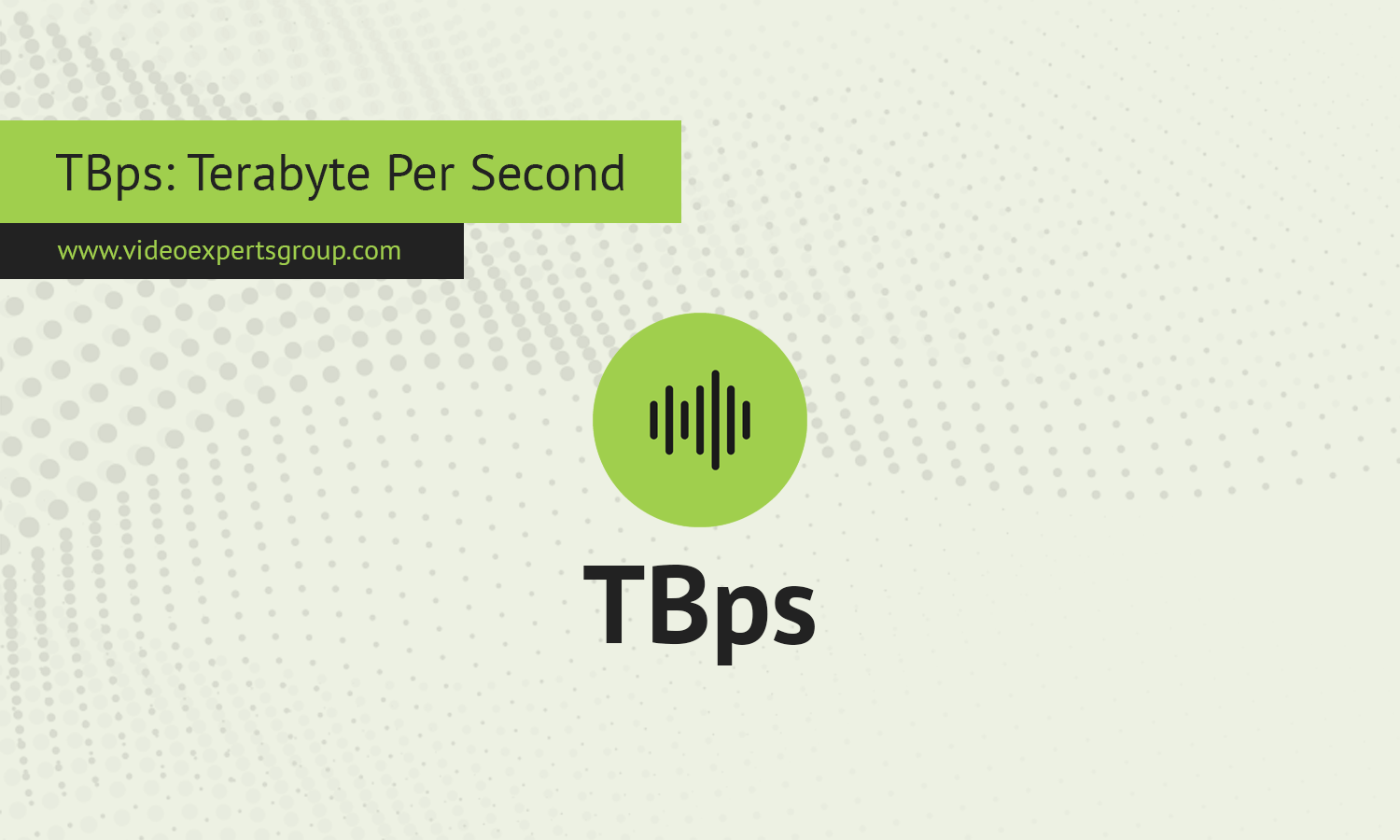As data transfer rates continue to rise, understanding the units used to measure these speeds becomes essential. With the digital world growing exponentially, networks, storage systems, and cloud platforms require massive bandwidth to process and move large volumes of data efficiently. One such measurement unit is TBps, which represents Terabyte per second — a crucial metric for assessing how quickly data can be transmitted across high-performance systems. Whether in advanced data centers or cloud environments, TBps speeds push the boundaries of what is possible in data transfer.
Meaning
TBps (Terabyte per second) is a unit of data transfer speed that refers to how much data can be transmitted or processed in a second. One Terabyte is equivalent to 1,024 gigabytes (GB) or approximately 1 trillion bytes of data. Therefore, when you see a measurement of 1 TBps, it means that the system can transfer one trillion bytes of data every second.
To put this into perspective, TBps is typically used to describe the performance of extremely high-speed networks, storage arrays, or cloud services handling massive datasets such as those used in scientific research, big data analysis, machine learning, and other data-intensive applications. It is far beyond the capabilities of consumer-grade internet speeds and is primarily relevant to enterprise-level infrastructure.
For example, 1 TBps of data transfer speed could transfer an entire 4K movie in less than a second, making it a benchmark for industries that need ultra-high-speed performance.
Conversion Table
This table includes conversions from bits per second (bps) to tebibytes per second (TiBps), along with an additional column for bytes per second (Bps), making it easier to understand how these units relate to each other.
| Unit | Bit per second | Byte per second |
|---|---|---|
| 1 bit per second (bps) | 1 bps | 0.125 Bps |
| 1 kilobit per second (Kbps) | 1,000 bps | 125 Bps |
| 1 megabit per second (Mbps) | 1,000,000 bps | 125,000 Bps |
| 1 gigabit per second (Gbps) | 1,000,000,000 bps | 125,000,000 Bps |
| 1 terabit per second (Tbps) | 1,000,000,000,000 bps | 125,000,000,000 Bps |
| 1 petabit per second (Pbps) | 1,000,000,000,000,000 bps | 125,000,000,000,000 Bps |
| 1 exabit per second (Ebps) | 1,000,000,000,000,000,000 bps | 125,000,000,000,000,000 Bps |
| 1 byte per second (Bps) | 8 bps | 1 Bps |
| 1 kilobyte per second (KBps) | 8,000 bps | 1,000 Bps |
| 1 megabyte per second (MBps) | 8,000,000 bps | 1,000,000 Bps |
| 1 gigabyte per second (GBps) | 8,000,000,000 bps | 1,000,000,000 Bps |
| 1 terabyte per second (TBps) | 8,000,000,000,000 bps | 1,000,000,000,000 Bps |
| 1 kibibyte per second (KiBps) | 8,192 bps | 1,024 Bps |
| 1 mebibyte per second (MiBps) | 8,388,608 bps | 1,048,576 Bps |
| 1 gibibyte per second (GiBps) | 8,589,934,592 bps | 1,073,741,824 Bps |
| 1 tebibyte per second (TiBps) | 8,796,093,022,208 bps | 1,099,511,627,776 Bps |
Pros
-
Unprecedented Data Transfer Speeds: TBps speeds represent the cutting edge in data transmission technology, ideal for sectors that require large amounts of data to be moved swiftly. For example, supercomputers and AI systems benefit from these speeds to process complex simulations or machine learning models in real-time.
-
Efficient Handling of Big Data: As companies collect increasingly large datasets, speeds measured in TBps make it possible to transfer and process this data with minimal latency. Industries like finance, healthcare, and research, which depend on real-time data analytics, can leverage TBps to improve efficiency and reduce delays.
-
Supports Advanced Cloud and Storage Solutions: Cloud infrastructure offering TBps-level transfer speeds can better handle global-scale applications, making real-time data replication, backup, and disaster recovery faster. It also allows cloud providers to manage and serve vast amounts of information to users without noticeable lag.
-
Future-Proofing: As data demands increase, the need for higher speeds will only grow. Adopting systems that can handle TBps transfers future-proofs the infrastructure, enabling businesses to scale their operations without the limitations of slower data transfer speeds.
Cons
-
Costly Infrastructure: Implementing systems that support TBps speeds requires advanced hardware and networking solutions, which are often expensive. This can be a significant financial burden for businesses, especially small to mid-sized organizations. High-speed fiber optic networks, specialized routers, and large-scale data storage solutions are all part of the cost equation.
-
Limited Use Cases: While TBps speeds are incredibly fast, not all industries or applications need such extreme bandwidth. For example, for regular business operations or consumer-level services like video streaming or browsing, even Gbps (Gigabit per second) speeds may be sufficient. Only specific high-demand sectors truly benefit from TBps, making its use cases niche and specialized.
-
Complex Setup and Maintenance: The systems that handle data transfers at TBps levels require complex setup, monitoring, and maintenance. IT teams need to be well-versed in high-end networking technologies and ensure that all parts of the infrastructure — from switches to storage arrays — can handle these speeds. Any bottleneck could severely impact performance.
-
Power Consumption: Operating at TBps speeds generally means increased power consumption due to the high-performance hardware involved. This can add to operational costs and environmental impact, especially in large-scale data centers.
TBps (Terabyte per second) represents a cutting-edge data transfer speed designed to meet the growing demands of data-centric industries. With its ability to move vast quantities of information in mere seconds, it has become a critical tool for applications like scientific research, AI, big data analytics, and cloud computing. While it brings unmatched speed and efficiency, it also requires significant investment, specialized infrastructure, and careful maintenance. As data volumes continue to expand, TBps will likely play a key role in shaping the future of digital technology, providing businesses with the capacity to handle large-scale, data-intensive operations.
















